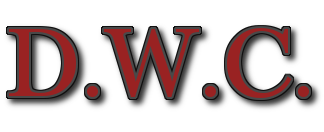Alan M Hunt was born in North
Yorkshire, England, studying zoology at Leeds College and Bristol
University. His artist training came from Middlesborough Art College.
This background of scientific and artistic skills causes Alan to call
himself "the zoologist who paints wildlife". Alan has worked with animals in the wild and in captivity - in parks,
zoos, and reserves. Indeed, he has used his ability as a
naturalist-guide for bird watchers and others interested in nature
around the world. [no-sidebar]
Alan's artist life began in earnest after others showed a great deal of
interest in his paintings. Over the years, he has exhibited his work in
museums, galleries and other locales worldwide. His wildlife art hangs
in public and private collections. Wildlife artist and activist Alan M. Hunt considers himself "a zoologist who paints wildlife."
Hunt has worked with birds and animals both in the wild and in
captivity, in parks, zoos and wildlife reserves around the world. He has
acted as a guide for birdwatchers and naturalists in Europe, the Middle
East, Africa and North America. Hunt began to paint full-time after his
artwork inspired much interest. Over the years, Hunt has exhibited his
artwork around the world and has gained many honors and awards. His
wildlife art hangs in many public and private collections throughout the
world, including Holland's prestigious Jacht Museum.
Hunt paints only during the daylight hours; he never uses artificial
light. Working in a variety of media, primarily oil and gouache, but
also ink, acrylic, egg tempera and watercolor, Hunt achieves a variety
of exquisite textures from feathers to rocks. With his backgrounds in
both art and zoology, Hunt has the advantage of being able to study
wildlife from two perspectives — that of scientist as well as artist.
His extensive world travels, observation and experience with wild
animals clearly show in his realistic style of painting, which is both
accurate and evocative.
A devoted conservationist, Hunt is very involved with worldwide
fund-raising efforts. Hunt makes whatever contributions he can to
conservation causes, as he considers animals first and foremost. He now
concentrates on painting endangered species to draw as much attention as
possible to their threatened survival. "Humans are destroying wildlife
and the planet, and we are animals, too," says Hunt. "If my son doesn't
get to see half the wildlife in his lifetime I've seen, I'll feel very
guilty. Rather than become famous as a painter, I would like to be
remembered as someone who tried to make people aware of the need to
protect the environment and the planet."























Post a Comment